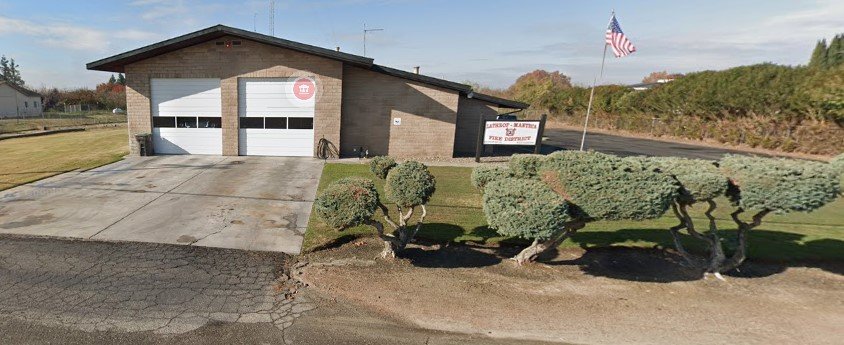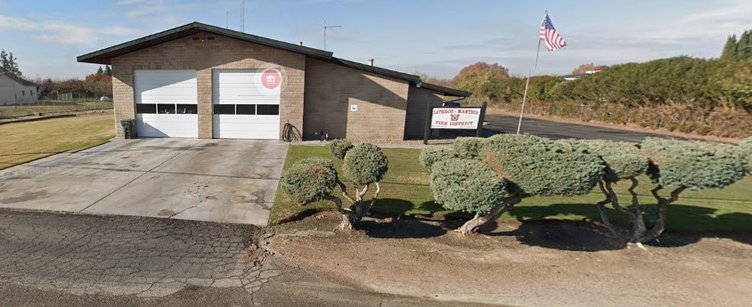There is a way the City of Manteca can get an additional engine company staffed 24/7 for $1 million and not $2.3 million to boost protection in the severely underserved southwest section of the community.
It comes with Lathrop-Manteca Fire District being able to reduce costs.
All it takes is both entities looking beyond their nose at the obvious.
In a nutshell, it involves:
►forging a joint powers agreement to partially replace an automatic aid agreement.
►building the city’s sixth fire station somewhere on the Raymus Parkway between Airport Way and Woodward Avenue.
►closing Station No. 32 on South Union Road that is now operated by Lathrop-Manteca Fire District.
And, if the city so desired to optimize fire responses throughout all of Manteca and not just simply the southwest portion, the beefed up fire staffing could easily be in place within months after a JPA is executed by assigning the nine firefighters to the city’s Union Road station.
That would allow both an engine company and a truck company (tiller truck with 100-foot aerial ladder) to operate out of the station.
Then, when the sixth station is built, nine more firefighters could be added to staff another engine company.
Here are the facts as they stand now:
►Manteca needs 18 additional firefighters, 9 for an engine company and 9 for a truck company.
►The vast majority of calls from Lathrop-Manteca Fire’s Union Road station are into the City of Manteca.
►The City of Manteca, when things are all said and done, will have added 4,000 to 5,000 homes within the immediate area.
►San Joaquin County south of Manteca that the No. 32 station serves is within the 200-year flood zone. Given levee protection is not being upgraded to meet that standard, after 2030 now new development can occur in the area under state law.
►consolidating the fire district with the city’s fire department is politically, and probably financially, a non-starter.
►the same goes for de-annexing the rural South Manteca fire district area and adding it to the city’s control via the process that allows cities to extend services outside of their city limits.
►many of the calls for service — with the vast majority being medical emergencies — are well outside the optimum five minute response time needed for there being a solid dance of having the best possible outcome.
►The City of Manteca has three firefighters per engine or 9 assigned to the company for 24/7 coverage. The Lathrop-Manteca fire engine has two on the engine at Station No. 32 or 6 assigned to the company for 24/7 coverage .
►The City of Manteca is not flush with money nor is the fire district.
How would a JPA basically work?
The biggest issue, as always, is money.
Lathrop Manteca firefighters make less than their Manteca counterparts, but the gap is narrowing.
Six firefighters on the Lathrop-Manteca payroll are roughly the equivalent in costs of five on the City of Manteca payroll.
The JPA would have the fire district send a check to cover what they are paying six firefighters annually to the City of Manteca. It could have an inflation clause, or not. More on that later.
Manteca would then hire the six Lathrop-Manteca firefighters and add three more.
Given the difference in salaries, the impact on the city budget would be equally to the hiring of four firefighters instead of just three.
It gets nine more firefighters in Manteca at the cost of $1 million more a year, instead of $2.3 million a year.
As such, it would upgrade rural fire service south of Manteca as three-man engines would always respond instead of two-man engines.
At some point, due to Manteca growth, how those six transferred positions are funded will need to be weighed in order to be fair and equitable.
It likely would get to the point where property tax the fire district collects south of the city limits would be forwarded to Manteca.
Manteca would clearly eventually be picking up a somewhat bigger tab than simply the budget equivalent of five firefighters for the engine company assigned to southwest Manteca.
Lathrop Manteca could close Station No. 32, saving money.
The logical move would have ownership of the station’s current frontline engine transferred to the city.
Then there is the question of the new Manteca fire station that has a projected cost in excess of $9 million.
It should be designed and built to accommodate an ambulance crew, whether it is part of the actual station or an area on the same parcel for housing of a crew and ambulance.
Giving Manteca District Ambulance the ability to station an ambulance in the area could significantly enhance medical emergency responses south of the 120 Bypass both within the city and in the rural area.
Joint power agreements such as outlined have been effectively used before.
One place is in Livermore and Pleasanton, where fire station was built virtually on the boundary between the two cities to effectively improve emergency responses in both jurisdictions.
No one at City Hall should believe Manteca is anywhere close to where they should be when it comes to assuring the best possible fire service without looking at things a bit differently.
There should be no debate that it is more than justified that the city needs 18 additional firefighters.
A possible JPA is a way Manteca can get 5 of the 18 for the cost of 6 firefighters in terms of city’s payroll costs.
It doesn’t shortchange Lathrop-Manteca.
That assumes much hasn’t changed since the 1990s, when an analysis showed the two Manteca rural area of the fire district wasn’t generating the revenue to completely cover the services provided.
Being able to shutter one station would reduce ongoing maintenance and operational costs such as electricity, et al.
And if there is an ongoing concern about the shuttered station and assuming the JPA eventually transitions the rural area south of Manteca to be an extended service area of the city with fire district taxes now paid being diverted to the city directly, there could be a stipulation requiring that proceeds of the sale of the station would go toward a new fire engine that would serve the rural area in question.
It’s a little too soon to look at Lathrop-Manteca’s station at Lathrop Road and Austin Road in the same manner.
That said, it may also never make sense.
Station No. 32 basically has almost all of its coverage area in the 200-year flood zone.
None of the coverage area is the Lathrop-Manteca station near New Haven School is in any flood zone area.
Elected leaders of both the fire district and the city have a fiduciary responsibility to explore the possibility of such a JPA.
They also have a moral responsibility to deliver the most effective protection within their capabilities.
Fires and heart attacks don’t pay attention to boundaries.
Neither should leaders if there are solutions that are mutually beneficial financially and in terms of better delivery of services to constituencies on both sides of the city limits.
This column is the opinion of editor, Dennis Wyatt, and does not necessarily represent the opinions of The Bulletin or 209 Multimedia. He can be reached at dwyatt@mantecabulletin.com






